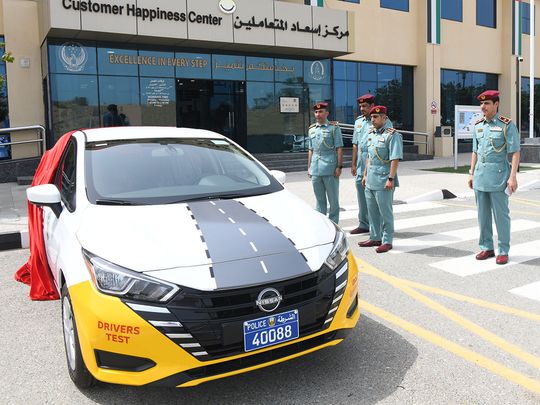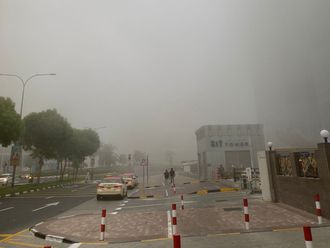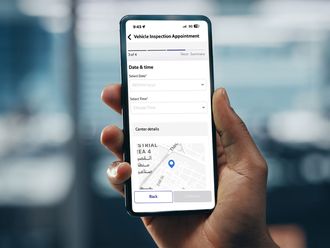
Ras Al Khaimah: The recent launch of a self-test vehicle for driving licence examinations in Ras Al Khaimah has become the talk of the town for its innovative offering. But just how does it work?
Gulf News spoke to the authorities concerned to get an answer.
The vehicle, launched by Colonel Saqr bin Sultan Al Qasimi, Director of the Vehicle and Driver Licensing Department at Ras Al Khaimah Police, has 10 cameras — four for 360-degree panoramic vehicle detection, four for peripheral vision and two for interior view — one in the front and the other in the back, he said.
How it works
First, the applicant’s information is verified at a customer service centre before being directed to the vehicle.
The applicant starts the test by pressing a button and the examiner monitors the process via a tablet linked to the vehicle’s cameras.
The vehicle guides the customer through test stages like reversing, lateral movement, or crossing the bridge. The examiner determines the test stage. based on the requirement. Commands and instructions are delivered through audio.
The examiner can take notes during the test and has the option to terminate it if needed. After the test, the vehicle returns to its designated location, and the results are sent electronically for approval.
Colonel Al Qasimi emphasised that the self-testing vehicle is designed to save time and effort while providing accurate results based on approved standards. It delivers immediate feedback, helping to reduce errors and improve trust and satisfaction.
Why is it a gamechanger?
According to the officer, the self-testing vehicle can improve driving tests in several ways. It is equipped with advanced technology that can accurately assess driving performance and reducing the margin for human error in evaluations. These vehicles can also provide real-time feedback to candidates, helping them understand their strengths and weaknesses immediately during the test.
By automating parts of the assessment, the self-testing vehicle can streamline the process, potentially reducing waiting times for student drivers and allowing for more exams to be conducted in a shorter period. Besides, standardised testing reduces variability in how different instructors might assess candidates, leading to a more consistent evaluation process.
Data collection and analysis
The vehicle can collect data on various driving metrics, which can be analysed to improve training programmes and identify areas where candidates may need additional instruction.
By utilising technology to assess driving performance, it may contribute to a safer testing environment, minimising risks associated with the presence of multiple examiners and candidates.
A more modern and technologically advanced testing method can enhance the overall experience for candidates, making the process feel more professional and less intimidating. By implementing these innovations, the self-testing vehicle aims to create a more efficient, fair, and successful driving licence examination process in the UAE.










